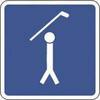 Add another prominent player to the injured list. Phil Mickelson, pulled out of his hometown event in San Diego after making the cut due to a low back concern. He says he’s good-to-go, but time will tell.
Add another prominent player to the injured list. Phil Mickelson, pulled out of his hometown event in San Diego after making the cut due to a low back concern. He says he’s good-to-go, but time will tell.
Low back injury is not something that’s here today and gone tomorrow. It lingers, as do most injuries. And though the pain may subside somewhat, the mindset is that on any given swing, the back could go. Not something you want to have to think about while trying to focus on your game.
Injury can occur as a result of an acute incident like slamming your 7-iron on a root that you didn’t see or twisting an ankle on a sprinkler head. These often require immediate attention and might prevent the individual from swinging a stick for a period of time while the injury is rehabbed.
A majority of injuries, though, are chronic in nature, developing over time and some without symptoms until the actual injury occurs. These types of injury tend to hang around and/or reoccur on a frequent basis. Common sites are low back, elbows, shoulders, hips and knees.
The underlying mechanism that leads up to most of these chronic injuries is misalignment of the body due to muscle deficiencies. These deficiencies, in the form of tight and/or weak muscles, pull the body out of balance, increasing the potential for those nagging aches and pains many golfers suffer from. They, by in large, are a consequence of lifestyle. . . what we do and what we don’t do.
Playing golf, for example, will develop imbalances in the body simply due to the fact that it is a repetitive, one-sided activity. We are using a particular set of muscle groups in a particular movement pattern over and over again, and so we create an unevenness, if you will, in our bodies.
The severity of the imbalances depend upon several factors such as the age an individual starts to swing a golf club (note how many tour players who started playing the game young are getting hurt. . . at least the ones we hear about), how often they swing a golf club, heredity to an extent, and whether or not a corrective exercise program is being done to prevent/alleviate the anatomical imbalance.
Age, if you're wondering, is no longer an excuse. It used to be when it was customary for people to become more sedentary as they got older. We now know, however, that flexibility, strength and range of motion, which is crucial for maintaining balance in the body, can be preserved as we age. We just need to work at it.
Activities of daily living will also take its toll on our bodies. The amount of time we sit during the day and how we sit are huge factors. So is how we carry bags, briefcases and babies. Are you always holding them on one side or do you alternate sides? Do you stand balanced on both feet or do you often shift your weight to one side?
These unconscionable “habits” that we develop will definitely have an impact on our musculoskeletal integrity as we age. Trust me when I say that we all have imbalances in our bodies. They are there just waiting for a trigger, like a golf swing or a reach down to tee the ball up, to set the pain reflex in motion.
Longer term consequences from misalignment include wear and tear on the joints of the body. This is often cited as a big reason for the increase in the number of hip and knee replacements that are done each year, and the pain and discomfort that is experienced prior to these procedures.
Assessing for imbalances in the body is not a difficult thing to do and is what is measured during a golf fitness assessment. It is not labor intensive and takes very little time. The information gathered is instrumental for designing a customized exercise program that will target the problem areas so that muscle deficiencies can be corrected in a time-efficient manner. That helps return balance back to the body and equates to a healthier golf game.
Body balance should be a goal for everyone, regardless if you play golf or not, but especially if you do swing a golf club. As golf, with its explosive, one-sided nature will add to the anatomical deficiencies and in many cases, as we have seen on tour these past few months, ignite the switch. Identify and correct the imbalances and you not only improve swing efficiency and playing performance, you improve your chances for painfree
golf.
- - - -
This article was written by Bob Forman. Bob is a certified golf fitness instructor, author and speaker. He holds a Masters degree in Exercise Physiology and has worked in the fitness field for over 30 years. His website, www.golfitcarolina.com, and book, Functional Golf Fitness Training, offer a unique insight into the physicality of the golf swing.

